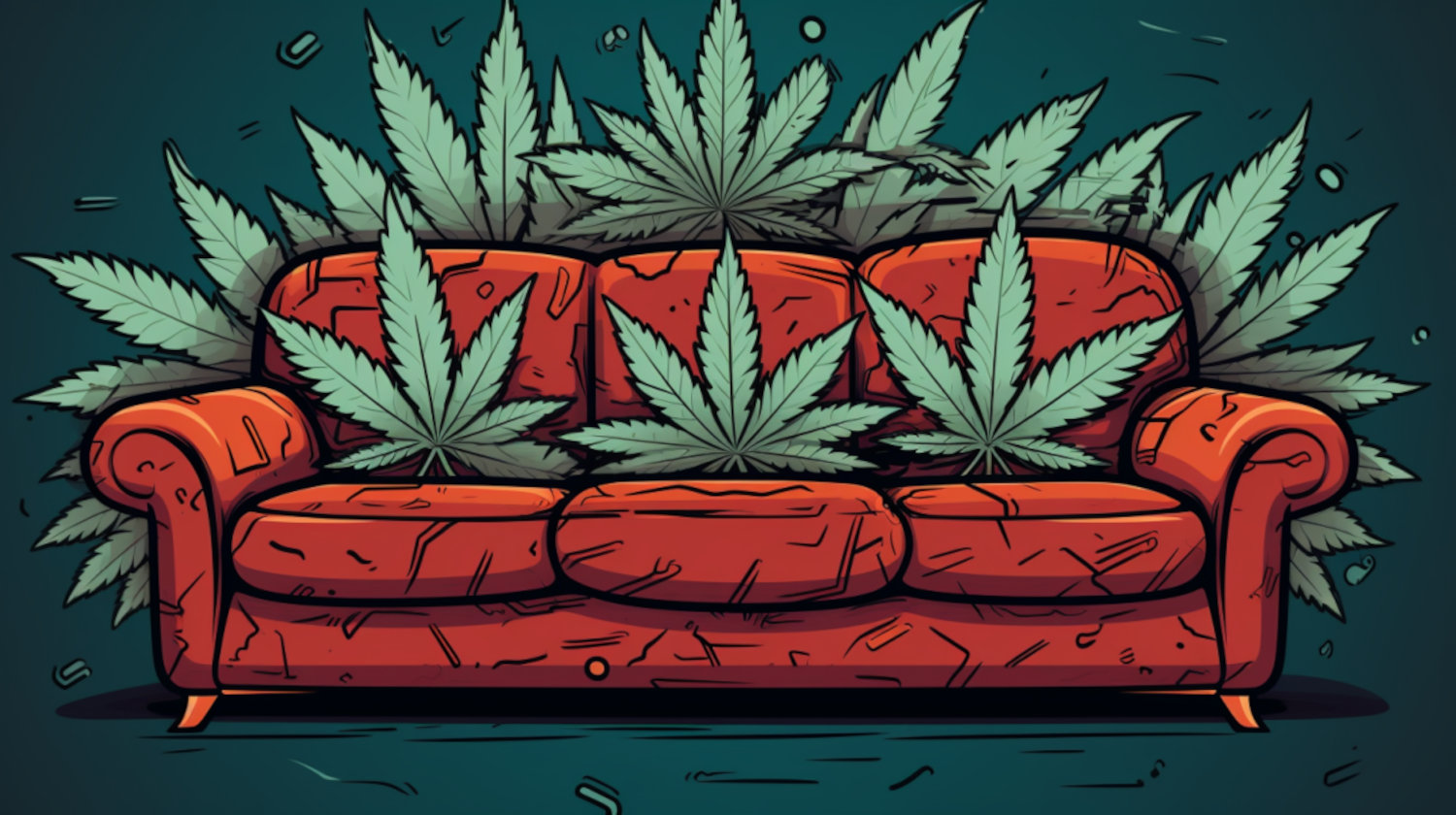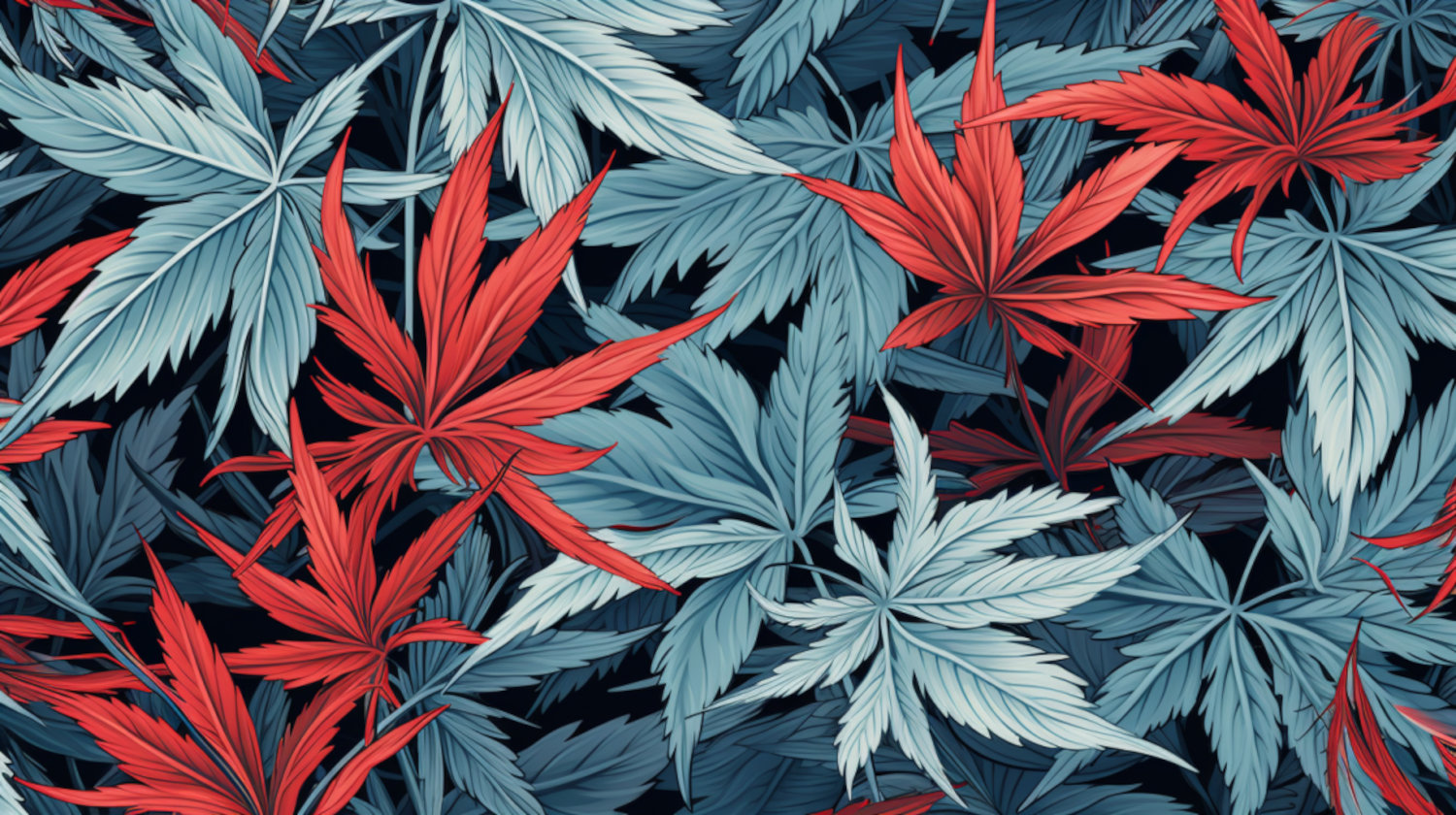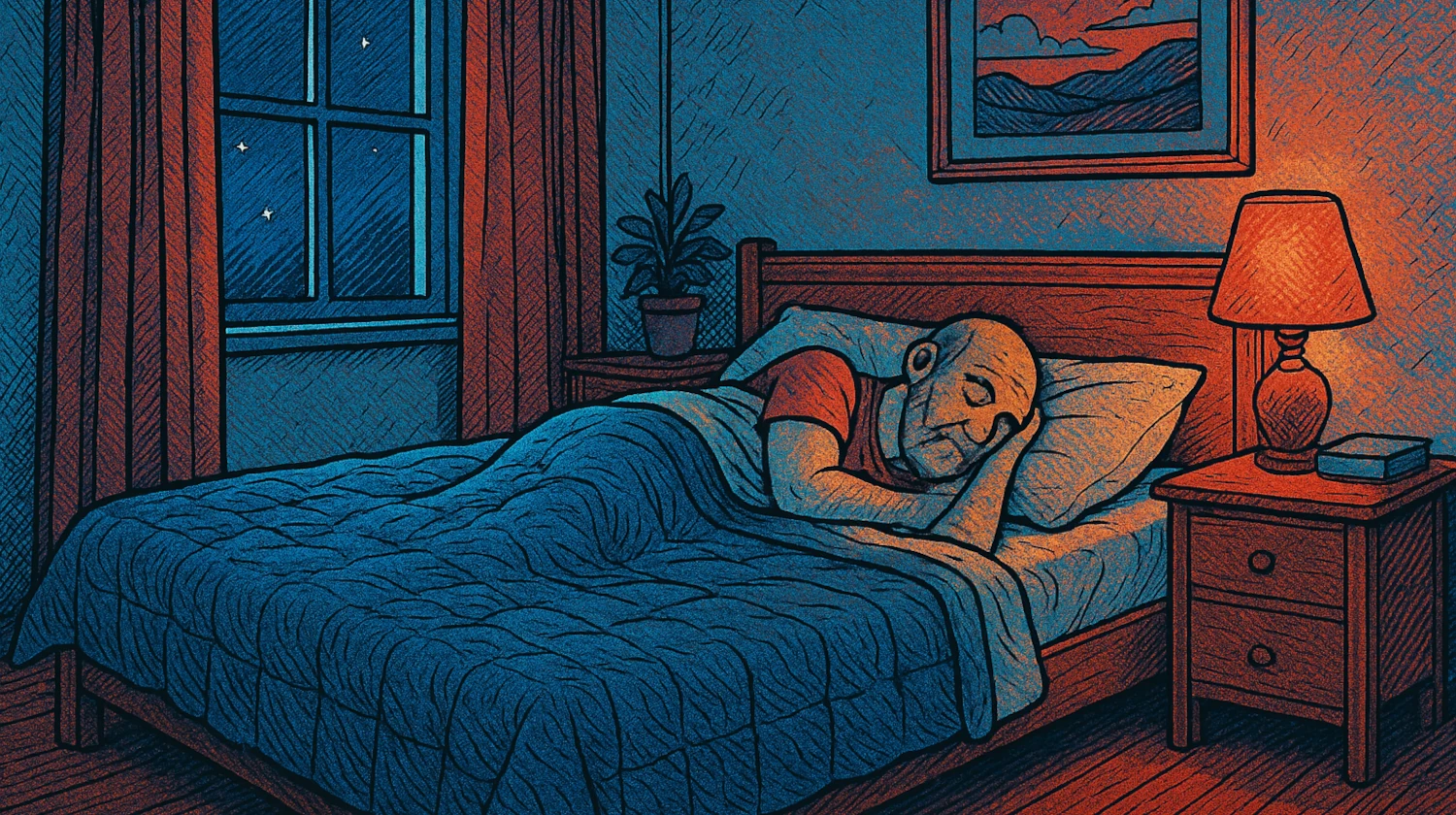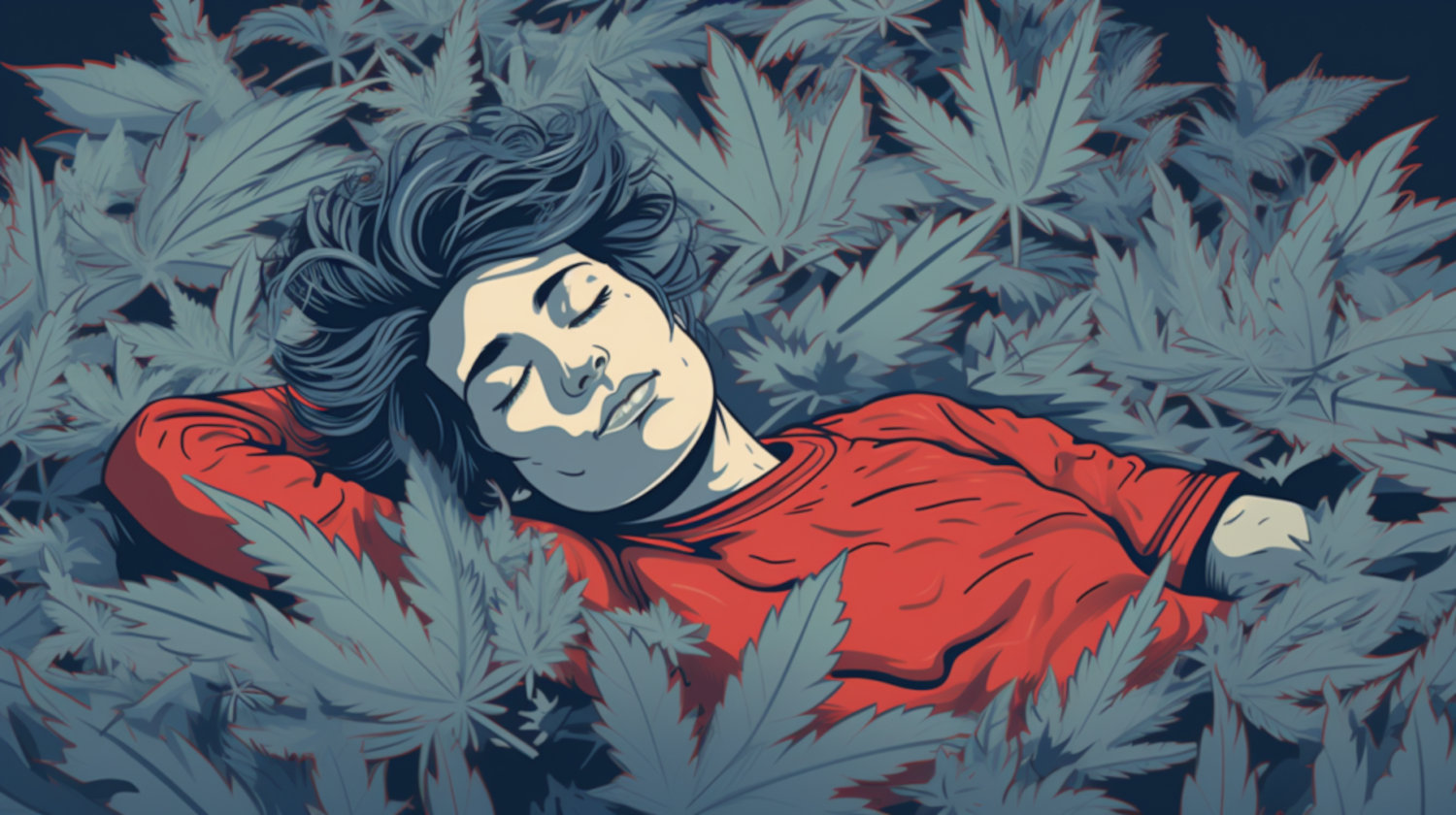The image of the stereotypical stoner virtually locked down on the couch, too lazy or tired to move, is etched into cannabis culture, but is there any truth to it? Certain cannabis strains are notorious for inducing "couch lock," but do these strains really leave you immobilized in your favorite TV-watching spot?
Broadly speaking, couch lock is a state of extreme sedation, lethargy, or general tiredness in which you feel little to no desire to move from the position you are currently in. It has a bit more nuance than some may think. While it can be ideal, it can also be an unwelcome outcome for anyone unprepared. What causes “couch lock,” what strains are most associated with it, what can be done to avoid it, and what to do when the feeling sets in?
What is Couch Lock?
Couch lock is a term interchangeably used with several others to describe a state of extreme sedation and or substantial relaxation. Couch lock has its fans and detractors. Those seeking medical relief have turned to heavy sedation strains and consumption items for years to help them get rest, calm their mind, ease their body pains, and many other medical issues. On the other hand, some users prefer to avoid couch lock, especially when sedation feelings can cut into an otherwise productive day.
Fans of the feeling describe the effects of couch lock as surrounded by pleasurable, cozy, and warm feelings. Relaxation is often expected, as is a desire to remain precisely where you are. While your body slows down, it is believed that the brain continues operating normally even after it has consumed a considerable degree of THC.
Couch lock feelings can last for one to four hours on average, depending on several factors. This includes the method of consumption, body frame, and any foods that have been eaten recently. Some of the classic signs include:
- Extreme sedation or lethargy
- Heavy sleep
- Sluggish behavior
- Relaxation
- Heaviness in certain limbs or other body parts
What Causes Couch Lock?

The couch lock effect is believed to be caused by the nuanced interactions between various plant compounds, most often THC and CBD, with the body and its cannabinoid system. The endocannabinoid system plays a vital role in modulating the sleep-wake cycle. One potential outcome of THC interacting with CB1 receptors is the release of neurotransmitters such as adenosine, which promotes sleep.1 Cannabinoids' interactions with these CB1 receptors, often found in the central nervous system, can affect various human functions, making us tired or heavily sedated. The addition of CBD in combination with THC may enhance the relaxed or sedated effects.2
Additionally, cannabis also releases dopamine, a critical function in our internal reward systems, which can increase feelings of relaxation and euphoria.3
Various terpenes may be associated with couch lock, including:
- Myrcene: Myrcene is a known sleep and sedation-inducing terpene, with couch lock chances potentially increasing the higher the myrcene presence.4 Myrcene is also found in hops, which explains why some beer drinkers nod off after consuming a couple of drinks.5
- Linalool: Linalool is linked to many calming plants, ranging from cannabis to lavender.6 The essential oils of these plants are generally regarded as having various soothing properties and inhaling cannabis cultivars high in linalool may induce couch-lock-like effects.
- Pinene: Pinene-rich essential oils have been used for centuries as a natural sleep aid, and research indicates that its interaction and release of GABA influence its potential as a sleep aid.7
- Terpinolene: Terpinolene is still being studied, but animal research has shown it has sedating effects. However, terpinolene dominant cultivars seem to perform oppositely in humans, producing energizing effects.8
What Weed Strains Cause Couch Lock?
What is the perfect couch lock strain? Be sure to look for strain options with one or more of the terpenes listed above. Some of the best options, according to many users, include:
- Skywalker OG: Known for its low-to-mid 20s THC content and presence of a high level of myrcene, Skywalker OG is a highly relaxing strain with ample potential for couch lock.
- GG4: Slightly lower on the THC potency scale, GG4's THC level of 21% and high myrcene content are often linked to relaxation and couch lock effects in many consumers.
- Granddaddy Purple: With a THC average of 17% and high levels of linalool, myrcene, and pinene, Granddaddy Purple is considered the go-to for inducing relaxation and possible sleep.
- Blackberry Kush: Blackberry Kush also has 17% THC and high levels of myrcene and pinene and is well-known for producing relaxing effects with a potential for sleep.
- Blue Dream: At a "lower" dosage of 19% THC, with a blend of terpenes like myrcene, pinene, and linalool, Blue Dream may produce various effects, including creative energy and relaxation.
- Sherbert: At 18% THC and high levels of myrcene, Sherbert might improve moods, including relaxation and a degree of couch lock suitable for winding down.
- Gelato: Gelato has a lower THC potency (15%) but moderate levels of myrcene and linalool and is linked to relaxation and uplifted mood.
- Cannatonic: With a broadly balanced profile of 4% THC and 9% CBD, along with terpenes like pinene and myrcene, Cannatonic is linked to relaxation and minor sedation effects, giving it the potential for a good wind down without overwhelming sedative effects.
While THC potency is crucial, remember that the whole plant profile should be considered. Look for sleep-inducing cannabinoids like CBN and the terpenes myrcene, linalool, or terpinolene.
While not valid for all strains labeled as “indica,” analysis has found that such strains tend to be dominant in myrcene, limonene, and α-pinene. This may lead some to believe all cultivars labeled as “indica” put people "in da couch," but there are enough exceptions to the rule. Be sure to look at a strain's terpene profile if sleep or relaxation is the goal.
How Do You Avoid Couch Lock?

The best way to skip couch lock is to avoid flower cultivars or products rich in myrcene, linalool, and terpinolene. When making your purchases, look at the specific cannabinoids and their potency levels, including THC, CBD, CBG, and CBN.
Make a note to keep your dosage low and the effects minimal whenever possible. Dabs, edibles, and vape cartridges can increase the potency of your hits in various ways, leading to more substantial effects, like couch lock.
Various activities can also keep you perked up for extended periods of time. One can try any common means, including:
- Drinking beverages high in caffeine or sugar
- Eat before consuming to give yourself a calorie-base
- Physical activity
- Shower (hot or cold, depending on whichever wakes you up)
What to Do If You Have Couch Lock
While couch lock can be irritating when it is caused unintentionally and during an inconvenient time, the effect can be great for a number of enjoyable activities, including but not limited to:
- Getting some rest
- Easing your mind
- Watching a show or movie
- Reading
- Listening to music
- Hanging out with friends and loved ones in a casual setting
It's suggested that you avoid heavy machinery when using cannabis, with the warning amplified a bit more for sedation-inducing strains. Other activities you may not want to mix with a couch lock strain include:
- Work
- Cooking
- Exercise
- Intercourse
- Being present with family and friends
Weed Strains to Combat Couch Lock

Strains labeled “indica” tend to have higher myrcene and limonene levels. Due to this, many lean towards a “sativa” labeled strain when combating couch lock. Regardless of what the strain label indicates, be on the lookout for the terpene profiles instead. Here is a trio of beloved buds linked to warm, energy-inducing feelings:
- Green Crack: With THC levels hovering around 25%, Green Crack is known for its energy and focus effects, making it a top choice for many battling sedation throughout the day.
- Jack Herer: Jack Herer’s THC levels of 15-24% may help deliver a clear-headed, uplifting experience accompanied by a creative energy boost.
- Durban Poison: Originating from South Africa, and roughly 25% THC and zero CBD, Durban Poison is a landrace typically capable of delivering uplifting and energetic effects.
References
- Edwards D, Filbey FM. Are Sweet Dreams Made of These? Understanding the Relationship Between Sleep and Cannabis Use. Cannabis Cannabinoid Res. 2021;6(6):462-473. doi:10.1089/can.2020.0174 ↩︎
- Low B, Xin Ru Lee, Soga T, Bey Hing Goh, Alex D, Kumari Y. Cannabinoids: Emerging sleep modulator. Biomedicine & Pharmacotherapy. 2023;165:115102-115102. doi:https://doi.org/10.1016/j.biopha.2023.115102 ↩︎
- Kesner AJ, Lovinger DM. Cannabis use, abuse, and withdrawal: Cannabinergic mechanisms, clinical, and preclinical findings. Journal of Neurochemistry. 2021;157(5):1674-1696. doi:https://doi.org/10.1111/jnc.15369 ↩︎
- Hanuš LO, Hod Y. Terpenes/Terpenoids in Cannabis: Are They Important?. Medical Cannabis and Cannabinoids. 2020;3(1):25-60. doi:https://doi.org/10.1159/000509733 ↩︎
- Surendran S, Qassadi F, Surendran G, Lilley D, Heinrich M. Myrcene—What are the potential health benefits of this flavouring and aroma agent? Frontiers in Nutrition. 2021;8. doi:10.3389/fnut.2021.699666 ↩︎
- Cui J, Li M, Wei Y, et al. Inhalation Aromatherapy via Brain-Targeted Nasal Delivery: Natural Volatiles or Essential Oils on Mood Disorders. Frontiers in Pharmacology. 2022;13. doi:https://doi.org/10.3389/fphar.2022.860043 ↩︎
- Weston-Green K, Clunas H, Jimenez Naranjo C. A Review of the Potential Use of Pinene and Linalool as Terpene-Based Medicines for Brain Health: Discovering Novel Therapeutics in the Flavours and Fragrances of Cannabis. Frontiers in Psychiatry. 2021;12. doi:https://doi.org/10.3389/fpsyt.2021.583211 ↩︎
- Lewis MA, Russo EB, Smith KM. Pharmacological Foundations of Cannabis Chemovars. Planta Medica. 2017;84(04):225-233. doi:10.1055/s-0043-122240 ↩︎
The information in this article and any included images or charts are for educational purposes only. This information is neither a substitute for, nor does it replace, professional legal advice or medical advice, diagnosis, or treatment. If you have any concerns or questions about laws, regulations, or your health, you should always consult with an attorney, physician or other licensed professional.




